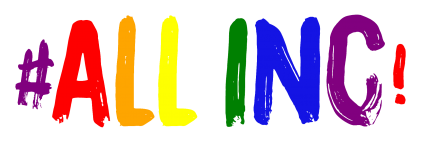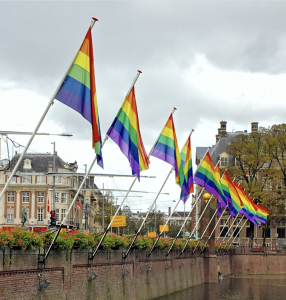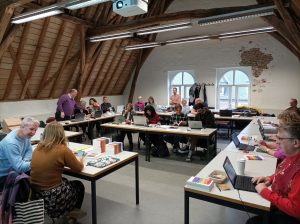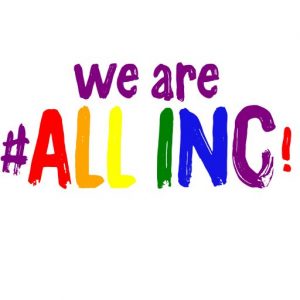LGBT+ talent is a big opportunity for employers in a tight labor market
Via our Belgian team of Kristof and Oliver, our blog welcomes this contribution originated in the JoinMe2 project for inclusive education. Read the project’s mission statement here.
Special thanks to our team and above all to the post’s original creators, Deni Mazrekaj (KU Leuven & Utrecht University) and Chantal van der Putten (Student Pride The Netherlands), who spoke on the subject with Glenn van der Burg on the People Power Podcast.
Can I tell the employer about my gender identity or not? Many LGBT+ people are concerned about the answer to this question.
Research shows that gay, bisexual and transsexual people experience unequal treatment on the labor market. They are less likely to get hired, less likely to be promoted, more likely to be fired, and they earn less on the labor market. Consistent with theories of discrimination, these discrepancies are larger in the private sector than in the public sector, larger in male-dominated occupations than in female-dominated occupations, and larger for LGBT+ people who have openly expressed their gender identity than the ones who have not. In the EU28, 21% of LGBT+ people felt discriminated against at work. Transgender people tend to experience the largest penalties on the labor market, followed by bisexuals and gay males. Lesbian women, on the other hand, tend to earn more on the labor market than straight women, but still less than straight men. One of the explanations for this is that hiring managers are mostly male and they value masculine qualities. In turn, they perceive lesbian women as having more masculine qualities than straight women.
It is also important to consider how children with same-sex parents perform on the labor market. In a recent study using population data from the Netherlands, Silvia Palmaccio, Deni Mazrekaj and Kristof De Witte found that children born into same-sex families are more likely to choose for part-time work and female-dominated occupations such as e.g., teaching, hairdressing, nutrition, and translation. As a result, they tend to earn less on the labor market than children in different-sex families. This is particularly interesting because previous research showed that children with same-sex parents performed better in school than children with different-sex parents. The authors found evidence that children with same-sex parents conformed less to gender norms and gave more weight to non-wage-related job characteristics.
LGBT+ people experience both violent behavior towards them (to a lesser extent) and mostly acts of micro-aggression on their job. Due to heteronormativity, people automatically assume that you are cisgender (meaning your gender identity and expression matches your sex at birth) and that your partner is from the opposite sex. This forces LGBTQ+ people to ‘come out’ many times in their lives. Students who graduate and start a working career regularly ‘go back into the closet’, even though they dared to be themselves during their education. It seems easy not to talk about your personal life, but colleagues talk about their wives or husbands and children frequently and will ask you about your life as well. That’s when LGBT+ people have to decide whether it feels safe enough for them to come out to their new coworkers. A decision straight cisgender people never experience. Violent behavior and micro-aggression towards LGBT+ people is not only morally, but also economically detrimental as it leads to a lower productivity of LGBT+ individuals. This hurts the LGBT+ individuals in question, but also the organizations and the society as a whole. Indeed, Badgett, Waaldijk, and van der Meulen Rodgers calculate that costs of bad health and labor market stigmatization as a result of weak LGBT+ inclusion lead to a loss in real GDP per capita of at about 400 USD in the United States.
So, what can be done about this problem? When experiencing discrimination at work, it is very important to report this to your manager or a confidential advisor. Research shows that only 11% of the LGBT+ people who experienced a recent incident of discrimination reported this to their manager. As a reason for not doing so, 41% state that “nothing would happen or change”, another 33% state that it is not worth reporting it as it happens all the time, and 22% are concerned that the incident would not have been taken seriously. As a manager, awareness of the problem of LGBT+ discrimination is the first step. In a second step, managers should speak about this topic. Finally, this must result in company policy. It is important to have visible and approachable role models, LGBTQ+ networks and safe spaces where everyone is welcome to talk and learn from each other. Both LGBTQ+ and straight employees. Meeting and getting to know each other helps to remove prejudices. This is also confirmed by research. It appears that contact interventions are better than, for example, inclusivity training. Moreover, it is important that people set a good example. That starts with inclusive language and asking open questions. For example, ask colleagues about their partner and not about their husband or wife.
Student Pride NL developed a toolbox that can help with inclusive language. This toolbox is originally developed for higher education but is also applicable in other organizations. The tools in the toolbox are selected based on 19 interviews with LGBT+ students in the Dutch higher education. They were specifically asked what they would suggest to make higher education more inclusive for them in terms of sexual and gender diversity. The toolbox contains tools based on best practice examples – examples that have been shown to be successful in practice – that specifically meet the most frequently mentioned needs of the research group. Not only students, but also lecturers from various fields of education were involved in the creation of the toolbox. Discussions were held about what they do (or not do) when it comes to inclusiveness of the curriculum regarding sexual and gender diversity and what they think the biggest challenges are. Additionally, two draft versions of the toolbox were presented to a group of teachers for input and feedback. It is important to note that this toolbox has no intention to force a certain way of teaching. It simply offers various guidelines so each person within an organization can determine what they are comfortable with and how they can contribute to making a workspace more inclusive.







